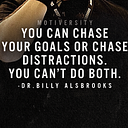What is ‘Minimum Viable Product’
Definition: Minimum Viable Product or MVP is a development technique in which a new product is introduced in the market with basic features, but enough to get the attention of the consumers. The final product is released in the market only after getting sufficient feedback from the product’s initial users.
Project teams working on new or improved processes might create MVPs to implement with beta testers to learn more about what else can be improved. Research and development teams in manufacturing environments might release the first version of a product, knowing that they have more ideas and plan to release other versions based on customer feedback.
You can use an MVP anywhere as long as the minimum viable product:
- Does real work or provides a real solution
- Is something customers or beta testers can evaluate
- You have a process to collect the evaluation information and act on it
Some of the biggest names in tech, e-commerce, and other industries started with a minimum viable product. For many, the MVP laid a foundation for a quick rise to the top.
“The first version of Gmail was literally written in a day.” — Paul Buchheit
So, the minimum viable product is that product which has just
those features (and no more) that allows you to ship a product
that resonates with early adopters; some of whom will pay you
money or give you feedback. — Eric Ries
Examples of successful MVPs and why they worked
Check out some MVP stories from real-life companies below to get inspired about using this approach with your projects, teams, or product development work.
Amazon
Jeff Bezos started Amazon with a single product concept: get books and get them into customers’ hands. Once upon a time, the mega-retailer only sold books, and it didn’t even have a warehouse to pull them from. Bezos bought the books from a distributor and shipped them to the customer each time they placed an order.
Obviously, that minimum viable product worked. People loved having the ability to access almost any book they might want — often at a discount. Bezos used the proceeds from Amazon to build more functionality over the years, adding increasing types of shopping, warehouses, and services.
Groupon
Did you know that Groupon didn’t even start with its own content management system? The founders used WordPress to get their MVP to market as quickly as possible and only built out the site you know as Groupon once they saw some success.
Today, Groupon dabbles in deals for local retailers, hospitality companies, and entertainment options, but it also offers ways to save on national opportunities and e-commerce. It’s come a long way from an MVP niche site only the savviest savers knew about to becoming a household name.
The MVP version of Facebook was super basic. Profiles didn’t allow much information and people couldn’t share videos or images. Plus, all the first adopters were Harvard University students.
But the idea was a good one, and the MVP adopted by Harvard students provided plenty of validated learning. That let the founders move forward with the social media platform, working through multiple development cycles and beta testing rounds to eventually make history with a game-changing social media app.
Spotify
Spotify launched to Swedish music bloggers, who beta-tested the MVP version and helped market it to the rest of the world at the right time. The original Spotify only worked on desktop, didn’t have a freemium version, and didn’t let users create playlists or share songs. It was missing many other features you might know and love today, but the minimum viable product was enough to provide a great experience for people who were hungry for a way to stream more music.
iPhone
The original iPhone launched in 2007 with a limited number of Apple apps and no way for customers to download other functionality. It didn’t even have all the functions other phones had at the time, and early adopters didn’t consider it a flawless product.
They did, however, consider it revolutionary. Apple used the first iteration of the iPhone to find out whether consumers would adopt an on-screen keyboard, wanted browser capability on a mobile device, and carry a single device for all purposes. The answers it got are now obvious, as the iPhone model became the foundation for almost all smartphones of the future.
Your MVP might not be the next iPhone or Facebook, but it can be a major step in the direction of success for your project or business. To make the most of the MVP method and develop a product strategy that works for you, though, you need a way for your team to work together quickly and agilely. Great project management software can help.
Agile development teams and other project teams that need to work quickly to get a minimum viable project to market can also rely on automations, color-coding, and other features that help ensure no task is left behind. Each team member can sign in, see what work is on their plate, and seamlessly make handoffs to ensure optimal efficiency and productivity.
